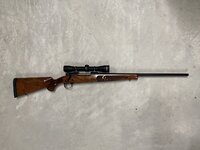When choosing MIL vs MOA, if your going to be hunting with someone else who is already familiar with one over the other, stick with whatever they are already comfortable with. It doesn't make any difference in most situations as long as your hunting buddy doesn't call out "1/2 MOA UP" and you have a MIL scope. Lots of people claim FFP but I've never seen a good one for hunting where and how I hunt. Lots of folks claim this is because I'm an ignorant troglodyte and can't possibly imagine how unfortunate they are to read my words or see my face but I would say be cautious when buying FFP, obviously I've just never seen a good one but I have several higher end scopes so I don't know what you have to spend to get one. As far as Nightforce being too heavy, this is correct, except for the 2.5-10 NXS models. I've found these to be absolutely awesome and you can get them with Zerostop; which I require. (The first time you miss an elk because you were off by an entire revolution and didn't know it, you'll think that an additional $200 for this feature is cheap). The beauty of Zerostop cannot be overstated. Steaming my overweight excuse for a body up 2,000 feet in the dark I'll think, "Oh! Did I reset the rifle to zero after shooting at that rock yesterday?" Pull my rifle off of my shoulder and give the knob a little twist. Yes, yes I did. I RULE!!!
I dial exactly as SDHNTR describes, zero at 200, hold dead on out to about 300 if there isn't much time and dial after that. The only exception to that is that if my scope has MILs or some other lines below the reticle, I will tape a chart to my stock that calibrates these at high power for quick shots during the whitetail run (those bucks seem to never hold still).
Also, I run a chart taped to my stock for every hunt based on the most likely elevation and temperature. The only time that this has caused me problems is when I forgot to change the chart and went from hunting elk at 8,000 feet and 40 degrees F to hunting whitetails at 2,100 ft and -10 degrees F. That cost me a nice buck but other than that, I'm sticking to this because I'm not someone who gets a ton of time to shoot. I have a buddy that often watches elk for 1/2 before he shoots. So he ranges the elk, powers up his phone, types in all of data, dials his scope and waits for the elk to present the perfext shot and shoots. Last year I had 10 seconds so I guessed 350, looked at my chart, dialed and fired. I was a inch or two high so it probably wasn't quite that far but she's in the freezer so I guess close enough.
Just make sure that you have enough ammo to get comfortable with everything at the range before you commit to it in the field.
Good luck!
Cross
I dial exactly as SDHNTR describes, zero at 200, hold dead on out to about 300 if there isn't much time and dial after that. The only exception to that is that if my scope has MILs or some other lines below the reticle, I will tape a chart to my stock that calibrates these at high power for quick shots during the whitetail run (those bucks seem to never hold still).
Also, I run a chart taped to my stock for every hunt based on the most likely elevation and temperature. The only time that this has caused me problems is when I forgot to change the chart and went from hunting elk at 8,000 feet and 40 degrees F to hunting whitetails at 2,100 ft and -10 degrees F. That cost me a nice buck but other than that, I'm sticking to this because I'm not someone who gets a ton of time to shoot. I have a buddy that often watches elk for 1/2 before he shoots. So he ranges the elk, powers up his phone, types in all of data, dials his scope and waits for the elk to present the perfext shot and shoots. Last year I had 10 seconds so I guessed 350, looked at my chart, dialed and fired. I was a inch or two high so it probably wasn't quite that far but she's in the freezer so I guess close enough.
Just make sure that you have enough ammo to get comfortable with everything at the range before you commit to it in the field.
Good luck!
Cross


